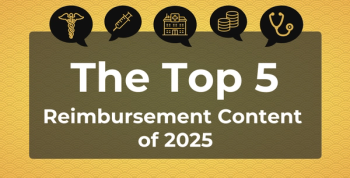
Lack of Long-Term Data, Insurance Coverage Impede Adoption of Histotripsy

Histotripsy shows promise for treating liver tumors with minimal adverse effects, but limited long-term data and insurance hurdles hinder its adoption, says Shaun P. McKenzie, MD, FACS, of Texas Oncology.
Although histotripsy has potential to treat liver tumors and other solid tumors with few adverse events, the lack of long-term data and insurance coverage has made it challenging to adopt the procedure broadly for eligible patients, said Shaun P. McKenzie, MD, FACS, a surgical oncologist with Texas Oncology.
In general, there are many adverse events to be concerned with, but he did highlight 3 to be aware of. Some patients have experienced mild pancreatitis when tumors are adjacent to the pancreas, likely due to incidental impact on surrounding structures, he said. There was a single reported case of liver failure in a patient who had already gone through multiple other treatments and was “teetering on the edge of liver dysfunction and failure anyway,” which he said suggests that underlying conditions may heighten risks for patients. Lastly, treating an excessive number of tumors in a single session has led to instances of acute kidney injury, and McKenzie recommends limiting treatment to 3 or fewer tumors per session.
In addition, ultrasound has limits, he explained. The technology requires being able to clearly see the tumor, but since the liver is up under the ribs, that can make it difficult to see the tumors, which in turn has made some patients ineligible as potential candidates.
Since there is no long-term data on histotripsy, many oncologists won’t recommend it, McKenzie said. When he discusses it with patients, he always explains to them that it’s a new treatment. However, he’s still had patients consider paying out of pocket for the treatment because insurance won’t always cover histotripsy. Although there have been instances where a patient has been denied and then later approved.
“Even though the FDA has approved this treatment, because it is new, and there is no published long-term data, the insurance companies have been very slow to approve the treatment,” McKenzie explained.
Newsletter
Stay ahead of policy, cost, and value—subscribe to AJMC for expert insights at the intersection of clinical care and health economics.








